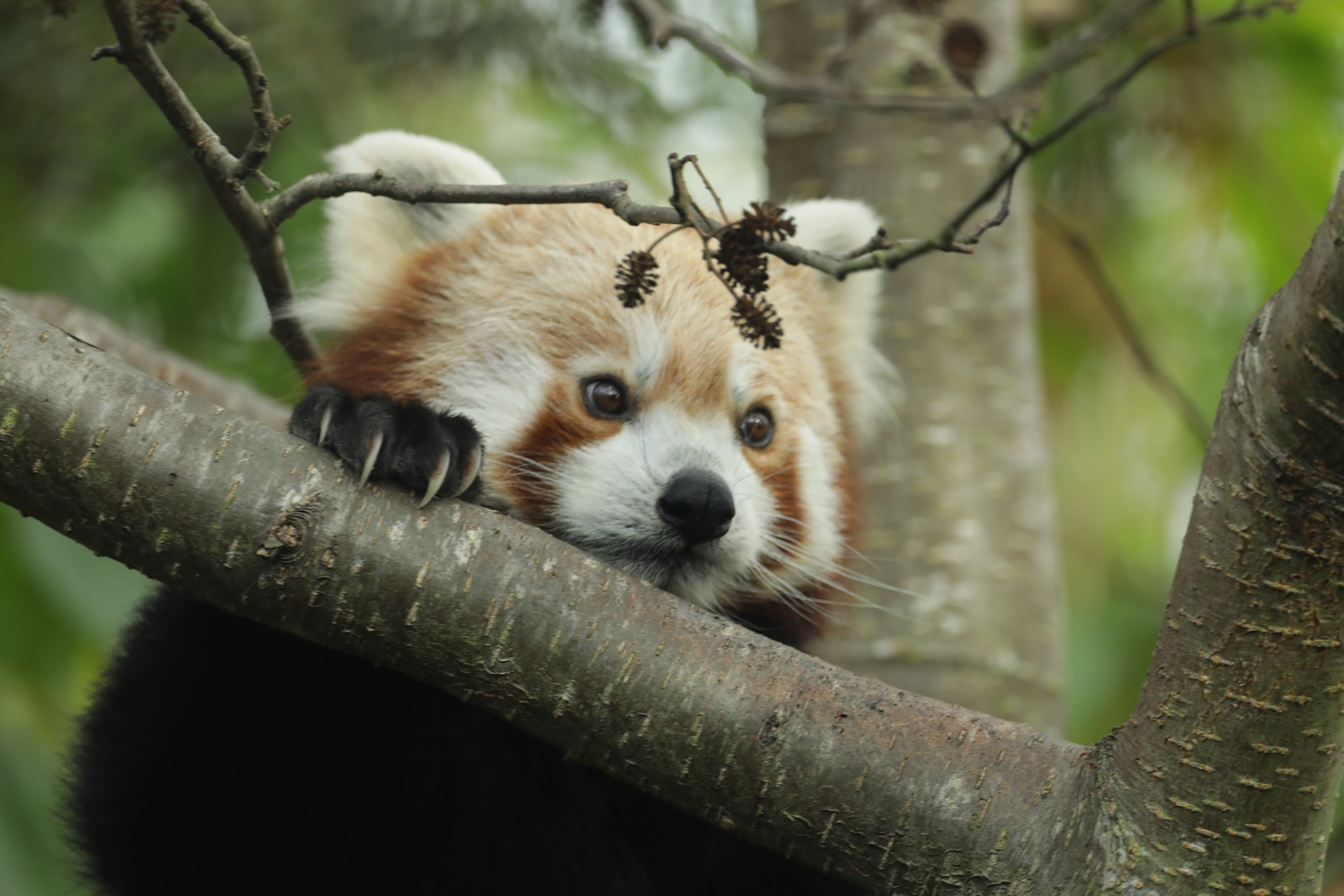Autumn 2025: ICAS community and education update
Posted 17 Nov 2025
/art-icas-wall.jpg)
Our charity has worked with Dr Arnaud Desbiez and his team at the Wildlife Conservation Institute (ICAS) in Brazil for over a decade to safeguard threatened giant anteaters, giant armadillos and their rapidly disappearing habitat. This team has made incredible strides in making habitats and roads safer for giant anteaters, and discovered nearly everything that is currently known about giant armadillos.
Arnaud recently updated us on what’s been happening with ICAS’ community and education initiatives over the last few months.
Art and conservation
/fernando-berg.jpg)
The artist Fernando Berg has now completed his beautiful giant armadillo murals. The murals reinforce the connection between beekeepers, animals and the preservation of local ecosystems.
I’m blown away by the passion and attention to detail that the artist Berg maintained throughout this process. Seeing his work almost made me feel like I was rediscovering the species.
/icas-wall.jpeg)
The story of the murals begins in Ribas do Rio Pardo, where the giant armadillo encounters a native species of bee (Centris analis). Both the bee and giant armadillos are solitary and important for the ecosystem. The mural highlights the relationship between animals and plants, such as the purple orchid (Cattleya nobilior), which is pollinated by this solitary bee and is a symbol of our state. In the piece, the bee and the armadillo get to know each other. Meanwhile our albino anteater comes on the scene.
In the second mural, in Três Lagoas, the giant armadillo explores the world of bees and the meaning of collective work. Our albino giant anteater now joins them. Flowers from the yellow ipê tree (Handroanthus chrysotrichus) drift down to the animals. A social native bee (Melipona rufiventris) is now guiding the armadillo and albino anteater towards a portal that takes us to the last mural.
In the third mural, in Brasilândia, after going through the portal, the giant armadillo flies with social bees, representing harmony between land and air. Elements such as the guavira fruit and flowers symbolise pollination and knowledge.
Of course, the purpose of the murals is to engage with local populations and reach new audiences. A total of 637 school kids visited the murals on inauguration day, and over 20 organisations participated in the different events. The murals have become a huge source of pride in each of these places.
Education activities
In partnership with Indigenous firefighters from PREVFOGO/IBAMA, our team visited 175 students at three Pantanal schools. We addressed the impacts of Pantanal fires and highlighted the giant armadillo and giant anteater to promote the conscious use of fire and preventing wildfires.
We attended the state’s VI National Youth Conference on the Environment (CNIJMA) in Campo Grande, organising a sensory reduction room. We have received training to do this, and it’s important for participants with disabilities such as autism. We also held the “Our Giants” exhibition for an estimated audience of 150 people.
/educational-activities.jpg)
Our education team has participated in science fairs at three schools in Campo Grande, conducting workshops on camera traps and the behavioural observation of armadillos and anteaters. We presented on the Anteaters and Highways project alongside running an interactive booth. A total of 1,465 students participated.
We were also invited to take part in the environmental fair in São Paulo where we showcased the ecological roles of the giant armadillo and giant anteater to 2,000 visitors.
Finally, six schools in Aquidauana, involving 305 students, participated in activities during National Traffic Week, in partnership with the Municipal Department of Traffic (DEMUTRAN) and the State Department of Traffic of Mato Grosso do Sul (DETRAN/MS), emphasising road safety and wildlife-vehicle collision mitigation.
ConservAção Brasil
My wife and I were invited to give some talks at this new conservation event in São Paulo. The event was free and open to the public. For three days all kinds of environmental topics were discussed by indigenous leaders, artists, journalists and researchers.
My favourite part was that doctors from São Paulo discussed how interlinked health and the environment are. It was a great experience, and we will participate in future editions.
Pombo Park in the Cerrado
In August, our team presented at the II Research Forum of the Pombo Municipal Park to an audience of approximately 30 people. We presented results from our education team and our research team, as well as the efforts to vaccinate dogs and care for people living around the park.
Upcoming Atlantic Forest workshop
Next week, I will be in the Atlantic Forest for our annual strategic meeting with the park and other conservation projects. This is the fifth edition of this meeting, and I love to use it as an example of a good idea that was fully embraced and taken on by a group.
You see, five years ago we organised the first meeting, bringing together all the NGOs working in the park, as well as the park authorities and other stakeholders, so that together we could plan our activities strategically to have the biggest impact.
The park is home to the last and only giant armadillos in the Atlantic Forest. Lots of other amazing but endangered animals call the park home, including birds, primates and jaguars.
I’m so happy that today the park organises the meeting themselves and brings us all together. True success is when you are no longer needed!
Find out more about RZSS conservation and our partners
